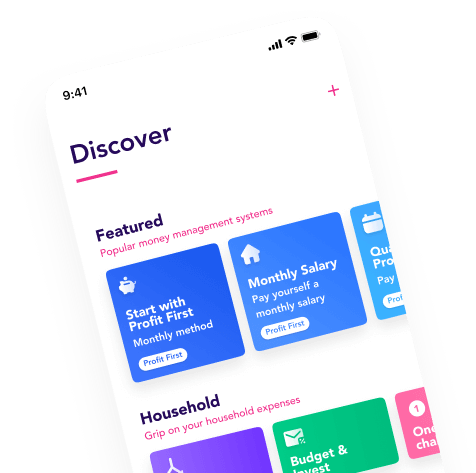
Another streaming subscription, a delicious dinner at a restaurant, a new pair of shoes... Do you always end up with less money than you thought you would have at the end of the month? The simple 50/30/20 budget method will help you get a grip on your finances.
Immediately buying that new phone or that fancy (and expensive) pair of shoes may give you a thrill, but after a while your savings account may suffer. With the 50/30/20 rule, you won't have to feel guilty anymore when you buy something nice for yourself; after all, your savings account is still well-stocked!
What is the 50/30/20 method?
The 50/30/20 method is a very easy budgeting method: you save 50% of your net income for your fixed expenses/necessities, 30% for hobbies and extras and 20% for saving and paying off possible debts. Just three categories! Nice and clear.
Fixed costs and necessities (needs)
Fixed costs and necessities include costs that cannot be avoided, such as:
Rent
Gas, water and electricity
Transportation (car, scooter etc.)
Insurances
Groceries
Don't forget your annual fixed expenses, such as:
Municipal taxes
Health insurance deductible
A buffer for gas/water/electricity

For example, if your net income is €2000, there should be €1000 in the pot each month for fixed expenses and necessities.
Hobbies and extras (wants)
Do you want to go out to dinner, to the movies or finally buy that cool e-reader? Then you can draw money from this jar. Assuming that your net income is €2000, this pot is replenished every month with €600. Not sure if something is a need or a want? Then ask yourself if you could live without the item in question. If the answer is yes, then it's best to take the necessary budget from the 'wants' jar.
Future money

You can put the last 20% into your savings account or spend it on debts that still need to be paid.
Saving 20% of your income every month, or 10% if the other 10% goes to debts, already provides a nice buffer in the short term. If you make €2000 net each month, your savings account will be bolstered by €200 (10%) or €400 (20%) each month. Bring on those grand future plans!
Not everyone needs a savings buffer of the same size. It depends on the composition of your household, whether you rent or bought a house and whether you drive your own car. The NIBUD has a handy tool to calculate this: The Buffer Calculator. This allows you to see which savings buffer suits your personal situation.
If your savings buffer is full, you might want to think about investing. Only invest money you really don't need in the short term, once you have built up a savings buffer. There are several options you can invest in, for example: crypto, gold, stocks and bonds. Each has its advantages and disadvantages.
Calculate your monthly budget
All very nice, but how does the 50/30/20 method work in practice?
- Calculate your monthly income. First, you need to know how much money is coming in each month. Here you can also look at any allowances you receive each month. Are you an entrepreneur? Then make sure you use your net income. Tip! You can automate remitting the 21% tax to a tax account/jar, in the Flow app.
- Review your expenses. To understand your spending habits, it's helpful to review what you've spent over the past few months. The payments you made will give you a good estimate of what you bought.
- Evaluate. See in which category (fixed expenses/ necessities, hobbies and extras, savings & investments) the expenses you made belong. That way you will know if you are somewhat on the right track. Are your hobbies and extras expenses above 30% of your income? Then see where you could possibly save money.

Overview
Want a good picture of you ideal 50/30/20 rule budget? Create an overview with Microsoft Excel, Google Sheets or Apple Numbers. There are templates available online.
Automize the 50/30/20 rule in Flow
Time to grab the Flow app. Flow can automate your personal 50/30/20 rule for you. That way you don't have to worry about it anymore!
